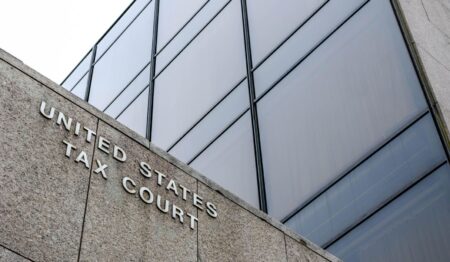Introduction
Most compensation earned by taxpayers is subject to employment taxes. When it comes to sole proprietors, independent contractors, and partners, employment taxes include those imposed by the Self-Employment Contributions Act (“SECA”). Rates in recent years have reached 15.3 percent of an individual’s “net earnings from self-employment,” a category which generally covers his or her distributive share from a partnership. There are several exceptions to the general SECA rules, of course. One, found in Section 1402(a)(13) of the Internal Revenue Code, provides that net earnings from self-employment normally do not include distributive shares to “limited partners.”
Sounds clear enough, right? Wrong. Taxpayers and the Internal Revenue Service (“IRS”) have been battling over the limited partner exception to SECA taxes for many decades. Two major causes for these longstanding disputes are the inaction by Congress for nearly 50 years, coupled with unauthoritative and changing guidance from the IRS. These two items are explored in this article, as readers take a ride through tax history.
Ambiguity Spanning Decades
It all started when Congress introduced SECA taxes way back in 1950. Initially, distributive shares to all partners were hit with these taxes. That meant that both general partners and limited partners were obligated to pay in the beginning.
As is often the case with tax laws, abuse arose over time. The legislative history reveals that Congress was concerned that unscrupulous persons were selling limited partner interests solely for purposes of allowing individuals who were otherwise ineligible for Social Security benefits to gain access to them. The limited partners were not investing in the normal sense of the word and not paying significant SECA taxes because of the minimum distributive shares they received. The limited partners, in short, were obtaining unfairly large Social Security benefits to the detriment of all workers financing the retirement system. Notably, many government workers were participating in this improper scheme, as it represented their only path to Social Security benefits.
Wait, taxpayers were voluntarily paying SECA taxes in order to qualify for Social Security benefits?
This might not make sense now, but it did back in 1950 when the rate was merely 2.25 percent of net earnings from self-employment. Congress wanted to put a halt to this behavior, so it enacted Section 1402(a)(13) in 1977. That law is known as the limited partner exception to SECA taxes. It provides that, aside from certain guaranteed payments to partners for services rendered, the distributive share of income to a limited partner is excluded from net earnings from self-employment.
Apparently, offering administrative guidance regarding the limited partner exception was not a priority for the IRS because it did not issue its first set of proposed regulations until nearly 20 years later, in 1994. They applied only to limited liability partnerships (“LLPs”) and limited liability companies (“LLCs”). Delving into the details about the first proposed regulations is unnecessary because they were never finalized and became obsolete just three years later.
The IRS, after considering public input, introduced a second set of proposed regulations in 1997 (“Second Proposed Regulations”). These were broader than their predecessor, covering not only LLPs and LLCs, but also many other partnership-like entities that had emerged under state law since Congress enacted the limited partner exception 20 years earlier. The Second Proposed Regulations stated that an individual was presumed to be a limited partner, unless (i) he or she was personally liable for the debts or other claims against the partnership based on his status as a partner, (ii) he or she had authority under state law to engage in contracts for the partnership, or (iii) he or she participated in the partnership’s business more than 500 hours a year. Moreover, the Second Proposed Regulations indicated that an individual who was a “service partner” in a “service partnership” would not be a limited partner. For these purposes, a service partnership was one whose activities substantially involved performing services in the fields of health, law, engineering, architecture, accounting, actuarial science, or consulting.
Progress halted later that same year, 1997, when Congress temporarily prohibited the IRS from finalizing the Second Proposed Regulations until July 1, 1998. Congress essentially declared that the legislative branch (i.e., Congress), and not an agency of the executive branch (i.e., the IRS), had authority to create law regarding SECA taxes and the definition of limited partner. Everyone expected Congress to act during the brief moratorium, clarifying the scope of the limited partner exception to SECA taxes. That never occurred, not then, and not now.
In light of the silence by Congress, various groups offered suggestions for remedying things. The ideas fell into three main categories. First, some proposed using the “material participation” standard that the IRS already uses in the context of passive activity loss cases under Section 469. They proposed that individuals who “materially participate” would be considered general partners subject to SECA taxes, while the rest would be deemed limited partners. Second, others urged the IRS to adopt the “reasonable compensation” standard currently used with shareholders in corporations. SECA taxes would apply only to the reasonable compensation paid to partners for services rendered. Third, another group advocated a “safe harbor.” The basic idea was that the IRS would set a formula to determine the amount of income that it would consider an acceptable return on the capital contribution by a partner, free from SECA taxes. Neither Congress nor the IRS implemented any of these three possibilities.
In 2003, the IRS appeared to offer a truce. An official announced at a major conference that the IRS would “not challenge what [partnerships] do or don’t do with regard to self-employment taxes” if they follow the Second Proposed Regulations.
Jump ahead more than a decade, to 2011, when the Tax Court decided the only case on the limited partner issue with precedential effect, Renkemeyer, Campbell & Weaver, LLP v. Commissioner. The taxpayers in that case formed an LLP under Kansas law to operate their law firm. It had three individual partners, each of whom held a General Manager Partner Interest and an Investment Partner Interest, had equal authority, and was entitled to an equal distributive share. The law firm filed timely tax returns showing revenues generated from performing legal services. The revenues were distributed to the individual partners, not reported as net earnings from self-employment, and not subjected to SECA taxes. The IRS audited and asserted, among other things, that the distributive shares were not shielded by the limited partner exception. Tax Court litigation ensued. The Tax Court recognized that Section 1402(a)(13) was outdated and that the IRS never finalized the Second Proposed Regulations, so it was obligated to engage in statutory interpretation with the help of little legislative history. It explained that the provision was designed to exclude from SECA taxes earnings of an “investment nature” and that a limited partner interest is similar “to that of a passive investor.” The Tax Court, based on the foundation, observed that nearly all the law firm’s revenue came from its partners providing legal services, the partners made only small capital contributions to the LLP, and the distributive shares were not similar to returns from a passive investment. It then concluded that the partners had to pay SECA taxes on all amounts received from the LLP.
One could anticipate serious gloating by the IRS after its victory in Renkemeyer, Campbell & Weaver, LLP v. Commissioner, but this did not happen, at least not immediately. Rather, consistent with its public announcement back in 2003, the IRS stated during a conference in 2011 that taxpayers “could rely” on the Second Proposed Regulations, despite the recent Tax Court decision.
Moving closer to the end of the decade, the IRS announced a “compliance campaign” in 2018 focused on taxpayers who supposedly persisted in improperly claiming benefits from the limited partner exception. The IRS explained that some partnerships were classifying all their partners as limited partners, thereby avoiding SECA taxes altogether. Other partnerships took a more conservative approach, claiming that only part of the distributive share to partners should be hit with SECA taxes. They did this by characterizing just a portion as guaranteed payments, or by “bifurcating” the amounts directed to the partners, as they say.
In 2021, the presidential administration issued its annual “Green Book,” which featured revenue proposals for the following year. It explained that considerable uncertainty exists because of the antiquated and narrow language in Section 1402(a)(13). The Green Book surveyed various proposals to solve the problem and seemed to support the one requiring limited partners who “materially participate” in a partnership to pay SECA taxes up to a certain threshold.
Later that same year, IRS National Office attorneys announced at a conference that the IRS planned to continue auditing and litigating SECA taxes involving limited partners because, well, it has been “fairly successful” in that area over the years.
Broad Implications
What could possibly come from congressional inactivity for about five decades, a lack of final regulations, only one Tax Court case with precedential value, a compliance campaign, inconsistent IRS positions about whether partnerships can find refuge in the Second Proposed Regulations, and the IRS National Office embracing judicial showdowns? If readers said tax litigation galore, they would be right.
Several major cases centered on the limited partner exception are already slotted before the Tax Court, including Sirius Solutions, LLP v. Commissioner, Soroban Capital Partners, LP v. Commissioner, and Deham Capital Management, LP v. Commissioner. Those particular taxpayers have lots of skin in the game, of course, but countless other entities relying on the limited partner exception to SECA taxes are also at risk. The overall outcome of the pending cases, and the specific reasoning by the Tax Court in making its determinations, will affect them, too. The result might embolden the IRS to continue attacking partnerships, pressure Congress to clarify the definition of limited partner, or persuade the IRS to issue final regulations in step with the broad array of entities available in 2023. The future is unpredictable, but what is certain is that many eyes will be on these issues as they progress.
Read the full article here













